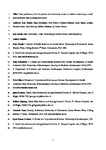Taste preference, food neophobia and nutritional intake in children consuming a cows’ milk exclusion diet: a prospective study
| dc.contributor.author | Maslin, Kate | |
| dc.contributor.author | Grimshaw, K | |
| dc.contributor.author | Oliver, E | |
| dc.contributor.author | Roberts, G | |
| dc.contributor.author | Arshad, SH | |
| dc.contributor.author | Dean, T | |
| dc.contributor.author | Grundy, J | |
| dc.contributor.author | Glasbey, G | |
| dc.contributor.author | Venter, C | |
| dc.date.accessioned | 2018-05-10T10:42:01Z | |
| dc.date.available | 2018-05-10T10:42:01Z | |
| dc.date.issued | 2016-12 | |
| dc.identifier.issn | 0952-3871 | |
| dc.identifier.issn | 1365-277X | |
| dc.identifier.uri | http://hdl.handle.net/10026.1/11483 | |
| dc.description.abstract |
<jats:title>Abstract</jats:title><jats:sec><jats:title>Background</jats:title><jats:p>Taste exposure in infancy is known to predict food preferences later in childhood. This is particularly relevant in children with cows’ milk allergy who consume a substitute formula and/or a cows’ milk exclusion (<jats:styled-content style="fixed-case">CME</jats:styled-content>) diet early in life. This prospective study aimed to show whether there is a long‐term effect of consuming a substitute formula and <jats:styled-content style="fixed-case">CME</jats:styled-content> diet on taste preferences and dietary intake.</jats:p></jats:sec><jats:sec><jats:title>Methods</jats:title><jats:p>Children were predominantly recruited from two large birth cohort studies in the <jats:styled-content style="fixed-case">UK</jats:styled-content>. Two groups were recruited: an experimental group of children who had consumed a <jats:styled-content style="fixed-case">CME</jats:styled-content> diet during infancy and a control group who had consumed an unrestricted diet during infancy. Parents completed a food neophobia questionnaire and an estimated prospective food diary. Children completed a taste preference test and their growth was assessed.</jats:p></jats:sec><jats:sec><jats:title>Results</jats:title><jats:p>One hundred and one children with a mean age of 11.5 years were recruited (28 <jats:styled-content style="fixed-case">CME</jats:styled-content> and 73 controls). Children in the <jats:styled-content style="fixed-case">CME</jats:styled-content> group had a significantly higher preference for bitter taste than those in the control group (<jats:italic>P</jats:italic> < 0.05). There were significant differences between the groups with respect to the intake of some micronutrients, including riboflavin, iodine, sodium and selenium. Food neophobia did not differ between groups. Some 28% of the <jats:styled-content style="fixed-case">CME</jats:styled-content> group were overweight/obese compared to 15% of the control group; however, this difference was not statistically significant.</jats:p></jats:sec><jats:sec><jats:title>Conclusions</jats:title><jats:p>Consuming a substitute formula and/or <jats:styled-content style="fixed-case">a CME</jats:styled-content> diet in infancy has a long‐term effect on the preference for bitter taste. Differences exist with respect to the intake of some micronutrients, but not macronutrients. There was a nonsignificant trend towards being overweight and obese in children in the <jats:styled-content style="fixed-case">CME</jats:styled-content> group.</jats:p></jats:sec> | |
| dc.format.extent | 786-796 | |
| dc.format.medium | Print-Electronic | |
| dc.language | en | |
| dc.language.iso | eng | |
| dc.publisher | Wiley | |
| dc.subject | cows' milk allergy | |
| dc.subject | dietary intake | |
| dc.subject | food neophobia | |
| dc.subject | taste preference | |
| dc.title | Taste preference, food neophobia and nutritional intake in children consuming a cows’ milk exclusion diet: a prospective study | |
| dc.type | journal-article | |
| dc.type | Journal Article | |
| dc.type | Research Support, Non-U.S. Gov't | |
| plymouth.author-url | https://www.webofscience.com/api/gateway?GWVersion=2&SrcApp=PARTNER_APP&SrcAuth=LinksAMR&KeyUT=WOS:000387849000012&DestLinkType=FullRecord&DestApp=ALL_WOS&UsrCustomerID=11bb513d99f797142bcfeffcc58ea008 | |
| plymouth.issue | 6 | |
| plymouth.volume | 29 | |
| plymouth.publication-status | Published | |
| plymouth.journal | Journal of Human Nutrition and Dietetics | |
| dc.identifier.doi | 10.1111/jhn.12387 | |
| plymouth.organisational-group | /Plymouth | |
| plymouth.organisational-group | /Plymouth/Faculty of Health | |
| plymouth.organisational-group | /Plymouth/Faculty of Health/School of Nursing and Midwifery | |
| plymouth.organisational-group | /Plymouth/REF 2021 Researchers by UoA | |
| plymouth.organisational-group | /Plymouth/REF 2021 Researchers by UoA/UoA03 Allied Health Professions, Dentistry, Nursing and Pharmacy | |
| plymouth.organisational-group | /Plymouth/Research Groups | |
| plymouth.organisational-group | /Plymouth/Research Groups/Plymouth Institute of Health and Care Research (PIHR) | |
| plymouth.organisational-group | /Plymouth/Users by role | |
| plymouth.organisational-group | /Plymouth/Users by role/Academics | |
| dc.publisher.place | England | |
| dc.identifier.eissn | 1365-277X | |
| dc.rights.embargoperiod | Not known | |
| rioxxterms.versionofrecord | 10.1111/jhn.12387 | |
| rioxxterms.licenseref.uri | http://www.rioxx.net/licenses/all-rights-reserved | |
| rioxxterms.type | Journal Article/Review |


